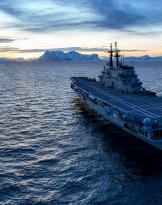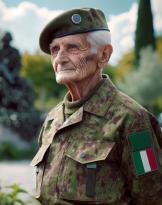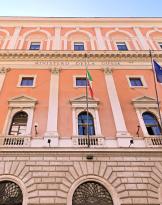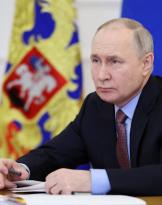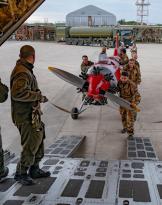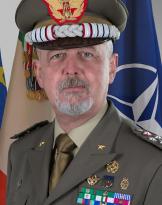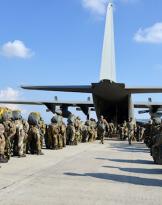History or memory, this is the dilemma and you will want to apologize if we still abuse the acclaimed Shakespeare, but this question has plagued the "scientists of time" at least since, in that Enlightenment before its time that changed the Greek way and the whole West theThe story from a simple observation or investigation it became an analysis of the past in space first and then, through the constructive use of testimony and the attempt of a history that was universal history, it offered itself, up to the present day, as a reference model for the investigation of human facts . Herodotus, Tacitus and Polybius can be called the fathers of a science, the history that still fascinates and divides today as it only holds the hypothetical phase of the hard sciences, without ever allowing those who study it to reach a universal, repeatable synthesis. demonstrable, this is because humanity proceeds its march on a straight line through sequential and sometimes consequential processes to the choices of individuals and social groups that associate them.
We want to start from the last sentence of the prologue of this reflection in order to provide a brief account of the facts and events that, on October 30, 1917, marked the history of a group of individuals, the soldiers of the 2nd Brigade of Cavalry and the infantrymen of the Bergamo Brigade, but also their enemies belonging to the XNUMXth Austro-German armies and the citizens of Pozzuolo del Friuli in the province of Udine, groups of individuals who, with their choices, influenced the course of events and albeit in a small corner of Italy and in small numbers, compared to the stratospheric figures of the Material schlacht they influenced the course of history significantly, but as always unconsciously.
Just 6 days had passed since 02:00 in the morning of that fateful 24 October 1917, better known to most as "the day of Caporetto", in this small period of time, the men of the XIV German and imperial-direction Army, led by the Prussian General Otto Von Below, army commander coming directly from the Marne front (France), they had overwhelmed all the Italian defense lines prepared for the imminent winter suspension of war operations from the lower edge of the Carnia sector up to Tolmino, locality in which, on this side of the Isonzo, for the Italian art, the welding took place between the sector controlled by the 2nd Army and the one under the responsibility of the 3rd.
Having poured into the Friuli plain with a dual purpose, chasing the 2nd Army retreating towards the Tagliamento River and at the same time attempting to wind up the 3rd Army, also retreating and pursued by a prudent Isonzo Armeé, led by Field Marshal Borohevic, Germanic allies seemed unstoppable and the Italian forces could not find a way to stem their retrograde race.
As mentioned, the advance of the triple, conceived and conducted with the code name of "Brotherhood of Arms" was overwhelming beyond all expectations and in a few days it swept across the Friuli plain, so much so that the planned objectives were achieved in a few hours would have needed several days of combat, the Command of the XIV Army was offered the possibility, with part of the advanced forces, to envelop and neutralize the Italian 3rd Army, commanded by the Duke of Aosta, cousin of Vittorio Emanuele III, king of Italy .
In order to slow down the enemy's impetus and with the intent of safeguarding the integrity of the 3rd Army: there will be many reasons for this need, both political and military, which we do not have time to investigate in this reflection. The Italian Supreme Command will decide to send mobile cavalry forces on that date destined or already marching for the winter quarters with the aim of creating defensive strongholds, exploiting the inhabited centers that dotted and still characterize the Friuli plain today.
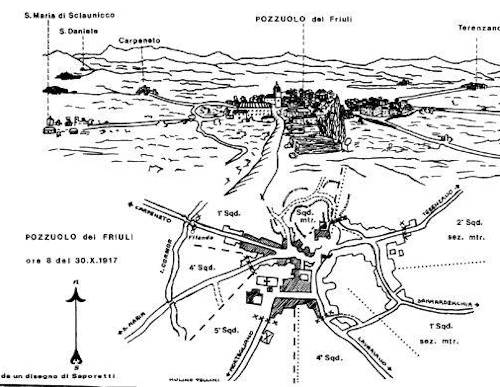
It should be noted that some command choices, strongly conditioned by the rapid evolution of events, will lead, during the battle of Caporetto, but also in line with choices common to all the belligerent armies, to move and rearticulate the departments of each level perhaps too frequently. order, for this reason a maximum picture of the forces in the field will be given on 29 October 1917, when, in essence, the 2nd Cavalry Brigade received the peremptory order to keep Pozzuolo, this order, as already mentioned, descended from 'imperative need to slow down, exploiting the inhabited centers present along the Udine-Codroipo route, the apparent unstoppable adversary march towards the bridges over the Tagliamento and at the same time prevent the 3rd army from being taken on the flank and behind by the double strength of the XNUMXth and of the Isonzo Armeé.
The 2nd Cavalry Brigade arrived in Pozzuolo del Friuli between 16:00 and 17:00 on 29 October from the south east, according to what was reported in the war diaries of the Genoa Cavalry and Lancers regiments of Novara, with very bad weather conditions, rain beating and intense cold, which should not have particularly favored the morale and cohesion of soldiers on horseback which we had and would have suffered the loss of numerous platoons in the future, sold in concurrence to other Large Units, according to the logic of the rearticulations of which and said.
On the arrival of the knights, contrary to what was expected, it was free from enemies and after some activities aimed at ensuring that it was indeed so it was divided into sectors destined to garrison and defense to the bitter end, in particular the Lancieri Regiment of Novara received the task to set up defenses to the south-southeast to stop or contain possible infiltrations typical of the German tactics of schwerpunkt, Genoa was instead placed to guard the country along what would have been the direction of the main Austro-German effort and which moved from Udine towards the bridges over the Tagliamento with the dual purpose of exhausting the retreating II Army, preventing it from crossing the bridges and attempting to surround the III Army, so as to neutralize any possible ambitions of consolidation and recovery of the Italian Army.
To fully understand the value of the fighting in Pozzuolo, it is necessary to dismantle the conviction, rooted in the minds and hearts of the Italians, that Caporetto was a defeat, a desperate and disorganized route led by soldiers moved by the worm of desertion. and by cowardly and incapable Officers.
Mistakes before and during the events of Caporetto were made, from a military point of view, at all levels and also by absolutely marches, however the strategic retreat followed a logically and strategically preordained plan, although accompanied, due to the too rapid succession of the events, from concurrent actions to alleviate the opposing pressure not always effective and consistent, but courageous and worthy of note and praise and it was precisely in the context of these actions that the counter-offensive action planned on the night of October 29 and entrusted to the commander of the 7th Infantry Division to which the rest of the 46th Division are assigned with the aim of supporting the right flank of the retreating XNUMXnd Army and prevent it from being definitively overwhelmed.
The operationally valid plan proved tactically unrealistic as it involved departments weakened by a too sudden and deep retreat and was based on erroneous considerations regarding the positioning of their forces and the enemy.
Having received the battle order at dawn on October 30, General Giorgio Emo Capodilista communicated to the command of the 7th division the position of the 2nd Brigade, under his orders, and the state of the forces at his disposal, this led to a redefinition of the line of combat, more advanced towards Udine, compared to what was previously planned, however the counter-offensive aimed at defending the flank of the II Army and preventing the winding up of the III was in no way rediscussed.
There is still a lot to say, but our reflection today focuses on the fighting of the 2nd Cavalry Brigade with the intention of combining history and memory on the day when the whole Army celebrates the feast of the "Arma di Nobile", without unnecessary chauvinism, but in the awareness that, those that were later renamed The Thousand Spears of Pozzuolo, covered themselves with glory with generosity and contempt of danger, containing for over eight hours the attacks of two enemy divisions, the 60th Imperial Division. directed by the Kosak group and the 117th German Division, while the 5th German Division met, about 1km north of Pozzuolo, the Bergamo Brigade marching towards Campoformido and in a combined action with the avant-gardes of the Austrian 1st Division neutralized the potential offensive by the Great Italian Unity.
With a force of about 600 men from the Genoa Cavalry Regiment and 400 from the Novara Lancers Regiment, but also thanks to the reinforcement, from 12 noon on 00 October, of a further 30 units of the Bergamo Brigade, attesting themselves with their own staff in Pozzuolo, everything was ready to face the preponderant enemy.
As already mentioned, the perimeter of the town was entrusted to the north-east to the dragons of Genoa, while the south-west part was garrisoned by the spearmen of Novara. Already from the early hours of dawn, patrols of the two regiments made contact with sparse opposing avant-gardes, but only at 12:00 the vanguards of the 117th Teutonic Division, supported by machine guns and artillery launched the first attack, the defense at the barricade was tenacious and dramatic , Genoa also resisted thanks to the reinforcements of Bergamo, precious reinforcements because they even allowed a bayonet counterattack to be staged, the enemy so contained and rejected will not repeat the attack, aiming rather to encircle the town and start its forces to the southwest.
With the intention of avoiding the encirclement and perhaps also to protect the Division Command, General Emo ordered the Lancers of Novara to charge the enemy in the open while the latter, caught off guard by the impetus of the Lancers, retreated in disorder leaving several dead and in the hands of the Italians 7 prisoners who reported that an entire Brigade had arrived in Terenzano, about 3 km north and that other Divisions would have arrived.
Scouting patrols sent with the aim of verifying what was said by the prisoners confirmed the presence of numerous enemy contingents and so at about 14:00 a new attack from the north struck, with greater vigor than the previous one, the barricades of Genoa which, while resisting and improvising counterattacks bayonet local bleeding literally, so much so that, after about an hour, the number of wounded was dramatic, while about 6000 Austro-Hungarians with mountain artillery and machine guns were massing around what was now turning into a reduced, al point that General Emo will send a request for help to the 7th Division, the response from the Division Commander was an invitation to resist, relying on the value and spirit of sacrifice of the Brigade.
Under the enormous enemy pressure coming from the north-east, Genoa and the Bergamo infantrymen retreated in two different phases, the second of which was facilitated by a charge from Novara capable of disorienting an entire Bosnian Battalion for the time necessary for the Dragon machine guns could be put back online to continue the defense actions to the bitter end.
After five hours of fighting, the 2nd Brigade was at the end, a single Genoa machine gun continued to fire while the enemy was moving inside the country, managing to target the defenders behind, after having placed their machine guns inside the case, in this condition, once the ammunition of the only surviving machine gun was exhausted, the Commander of the II Group of Genoa, surrounded by the survivors of his command, despite having received the massing order for the subsequent refolding, maintained his position and after having fired with the musket and pistol he left the last bullet for himself.
At the order of massing for the subsequent retreat some units of the Brigade were cut off and decided to face the enemy head on in the knowledge that they would never be able to reach the assembly point, so it was that Captain Ettore Lajolo will launch himself at the head of the his men against the machine guns sacrificing their own lives and that of his men who rushed there and without hesitation followed him, deserving the gold medal for military valor, while the Commander of Novara, Colonel Campari, even targeted by friendly forces who exchanged the his nourished device for overcoming Austrian forces, after numerous charges to the white weapon he will yield in front of the strength of the enemy and will be taken prisoner along with numerous others.
Pozzuolo del Friuli, seeing a cavalry brigade engaged, was raised to the rank of cathartic event for the entire weapon on horseback and even today that dynamic, courageous, unscrupulous and passionate resistance remains the main symbol of generosity and sacrifice.
History and memory merge together in this fact of arms because, if human actions are the salt of history, the choices of individuals consolidate the role of an event in memory and then it is left to the words of the German and Italian war bulletin of those days the judgment on the fights of Pozzuolo:
"[The enemy] on a protection line that goes from the river [Tagliamento] to Udine passing through Bertiolo-Pozzuolo-Lavariano, opposed a violent resistance to cover the retreat of the 3rd Army on the right bank of the Tagliamento."
«The 1st and 2nd cavalry divisions, especially the 'Genova' and 'Novara' regiments, heroically sacrificed themselves, and the aviators, who worked tirelessly, deserve above all the admiration and gratitude of their homeland».
Andrea Pastore


